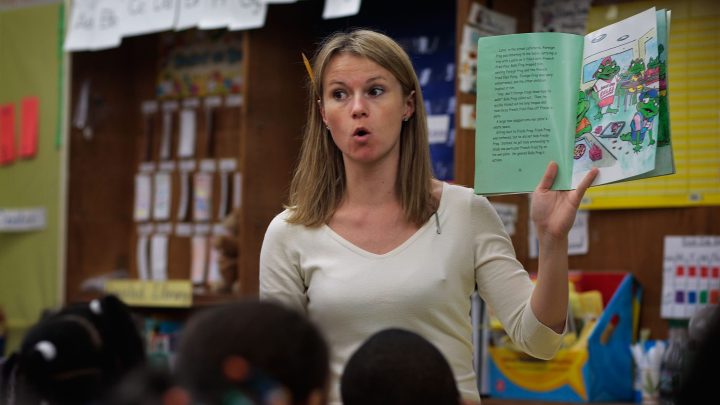
Many jobs still have demographically skewed workforces, new data shows
Many jobs still have demographically skewed workforces, new data shows

Every year, the Bureau of Labor Statistics puts out a snapshot of the American workforce that breaks down about 600 occupations by gender, race and ethnicity. The data for 2023 just came out, and it may come as no surprise that many jobs are heavily skewed demographically.
For example, 96% of dental hygienists are women while 99% of pipelayers and masons are men. Black workers make up about 13% of the labor force, but only 7% of lawyers are Black.
“Marketplace” host Amy Scott spoke with Lauren Weber, a Wall Street Journal reporter who delved into the new data, about “how we sort ourselves into different occupations and how in some ways we are sorted.” Below is an edited transcript of their conversation.
Amy Scott: So there is a lot that surprised me about this data. Like I knew early-childhood education was female-dominated, but 97%? Wow! What surprised you about some of these numbers?
Lauren Weber: I was interested in this data, which comes out every year, and there are so many tidbits in here. Like you said, the preschool and kindergarten teachers stat was interesting. I actually polled informally a bunch of friends and colleagues about that and asked, “What percentage of preschool or kindergarten teachers do you think are male?” And I got answers everywhere from about 5% to 30%. Everybody was shocked that it was so low. So, you know, when you look at the numbers themselves, and gosh, there’s so many great examples, I think it’s something like less than 2% of all logging professionals, all loggers, are women. Asians make up around 65% of all manicurists and pedicurists and also a very high proportion of software developers and scientists. So, it’s a really striking portrait of the American workforce.
Scott: As you say in the piece, there are sociology textbooks worth of explanations for these numbers. But you cover labor in the workforce. What are some of the big factors driving some of the disparities?
Weber: Well, I think the question that’s really difficult to answer, but it’s also the most interesting one, is how much of these career choices that we all make are based on choice and how much of it is about other factors, like maybe self-stereotyping or cultural stereotyping. Or maybe harder barriers, like discrimination or lack of opportunity. You know, any one person can describe their own career trajectory. But when you look at this data overall, it really shows a lot about who does what in our culture and how we sort ourselves into different occupations and how in some ways we are sorted.
Scott: If some of this is about self-selection, maybe there are some good reasons for women choosing certain professions, for example. Why do these disparities matter?
Weber: I think there are three main points of why it matters. One is labor shortages. [Employers] can’t find enough people for jobs. I hear that especially with a lot of blue-collar jobs, trades jobs. Well, you can look at this data and see, OK, only 2.2% of plumbers and pipelayers are women. For people who are trying to hire people in those fields, there’s huge pools of people that they’re not reaching. The other piece is I think it’s really important that we think about these questions of representation and who we see around us and how that shapes our thought about what’s possible for us. When my son, who’s now 11, was around 3 or 4, we used to read a book that was about a long-haul truck driver named Jane. And one day he said to me, “I’m sad because I want to be a truck driver, but I can’t because I’m not a lady.” I think about that all the time. Thinking about how seeing ourselves in jobs expands our idea of what’s possible. And then I think perhaps most importantly, there’s the issue of the connection between income and occupations. So, you look at a lot of the jobs where women comprise, like, 90% or more, they’re often lower-paid. And you know, that’s, I think, another reason to try to seek more equity in the workforce and a better spread of people being able to use their talents and skills.
Scott: Now, you did find some occupations that are fairly representative of the makeup of the workforce overall. What are some of those?
Weber: Yeah, that was really interesting. So we looked at the composition of the overall workforce and then what occupations mirror that closely, and we found things like hairdressers, paralegals, dietitians and nutritionists, and interestingly, journalists, kind of mirror the population in terms of racial and ethnic balance. A lot of those jobs are service- oriented. So, they’re very community based. So they might be by neighborhood or by region or geography. So, I think that’s one reason why they might be a little bit more representative than other jobs. Many of those jobs are actually dominated by women, like hairdressers or dietitians. And I don’t have an explanation for that.
There’s a lot happening in the world. Through it all, Marketplace is here for you.
You rely on Marketplace to break down the world’s events and tell you how it affects you in a fact-based, approachable way. We rely on your financial support to keep making that possible.
Your donation today powers the independent journalism that you rely on. For just $5/month, you can help sustain Marketplace so we can keep reporting on the things that matter to you.











